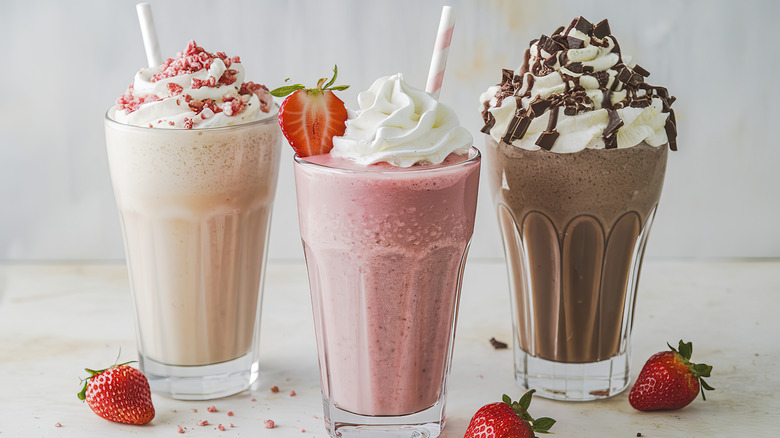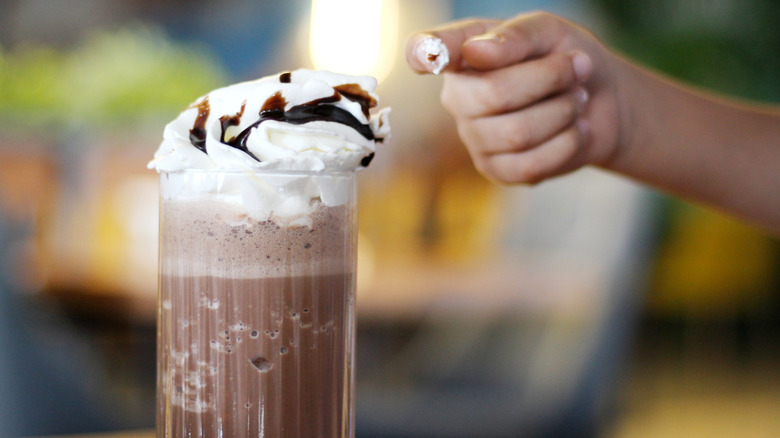The Subtle Difference Between Malts And Milkshakes
We may receive a commission on purchases made from links.
You've probably seen both milkshakes and malted milkshakes on various restaurant menus, especially at old-fashioned burger joints. At first glance, they may look pretty much the same. They're both blended frozen beverages and are commonly served in chocolate, vanilla, and strawberry flavors at greasy spoons, fast food stops, and diners. But there's a very specific difference between the two that makes their flavor profile delightfully different. Easily enough, it comes down to an ingredient listed in one of the names: malted milk powder.
Malt is the so-called wonder grain behind milkshakes and beer, making it an interesting and widely used substance. It's also found in candy, bread, whiskey, and, of course, many milk-centric beverages. In this case, malted milk powder is made from evaporated milk solids with wheat flour and ground malted barley. The malted barley powder is made from germinated barley grain that is then dried, made into a mash, roasted, and ground into a fine powder. When added to a food or drink, it lends a sweet, nutty, and caramel-like flavor that works well when paired with sugary tastes like chocolate or some bold fruits. That makes it a lovely addition to milkshakes, as it adds more sweetness, depth, and complexity. So, to put it simply, a milkshake is generally ice cream and milk blended together, and a malt is the same with the addition of malted milk powder. In some cases, malt syrup made from the powder is used as an ingredient instead.
When to have a malt and when to have a milkshake
Whether you should have a milkshake or a malt really depends on taste and texture preference. If you don't want a super thick or intense drink, milkshakes might be the better option for you. Malt powder tends to thicken liquids slightly and can even be a little grainy. A good milkshake pairs well with burgers or café sandwiches, and it's also fine on its own as a cold treat on a hot summer day. You can even make a decent milkshake without ice cream, so they're pretty convenient and adaptable. Simply take ice and milk or cream, then blend well until it's your desired consistency. These beverages have been around since the late 1800s, and ice cream was only added starting in the early 1900s, so you can enjoy the clean, frosty taste of a classic shake even if you lack ice cream.
You can make an intense chocolate malt without the use of ice cream as well. Malt drinks were invented in 1882, and malted shakes have been popular in ice cream parlors and soda shops since the early 1900s. Like milkshakes, they work well on hot days as a chilly indulgence and complement classic burgers and fries. While malt does go well with certain fruit flavors, it clashes somewhat with others. For those craving a sweet, citrus-flavored syrup like in an orange cream shake, it might be best to leave out the malt. It's a strong, earthy taste that can sometimes overshadow more delicate ones. However, if you love the taste of malt and want it in a non-frozen drink, powders like Ovaltine Classic Malt and Carnation Malted Milk can give you all that toasty goodness in hot cocoa or chocolate milk.

